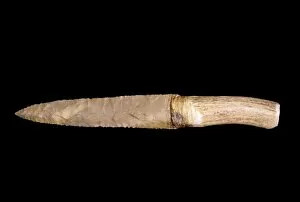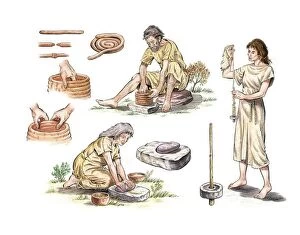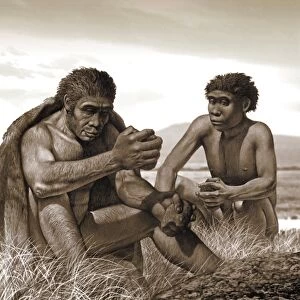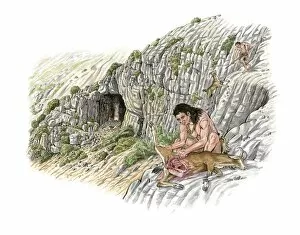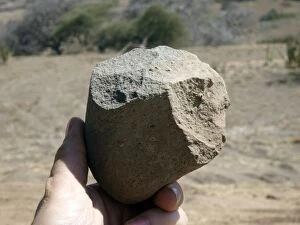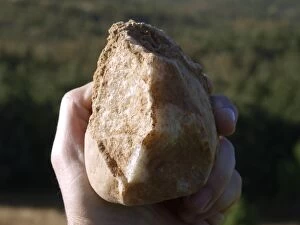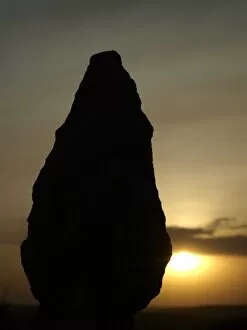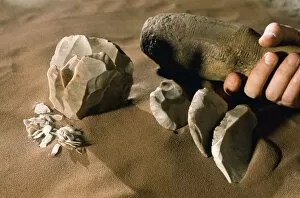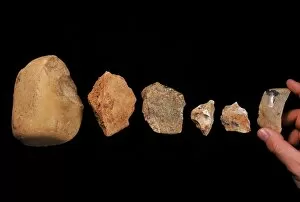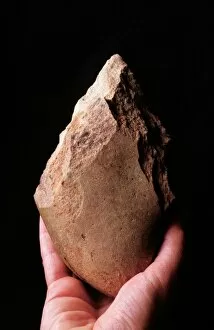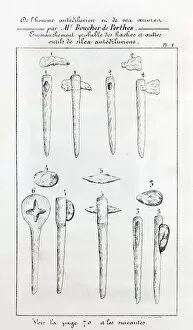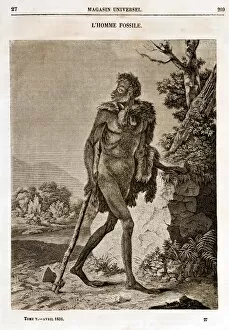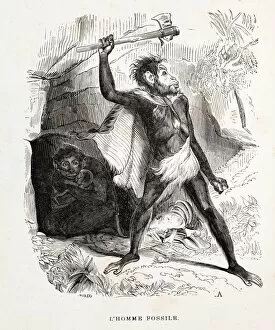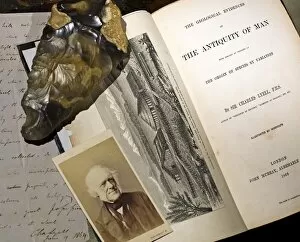Stone Tool Collection
"Unearthing the Past: A Glimpse into the World of Stone Tools" Step back in time and explore the fascinating world of stone tools
For sale as Licensed Images
Choose your image, Select your licence and Download the media
"Unearthing the Past: A Glimpse into the World of Stone Tools" Step back in time and explore the fascinating world of stone tools, where ancient civilizations left their mark on history. On page 175, a remarkable find awaits - a bottle that has endured not one, but two encounters with fire. Its green glass interior hints at its age, while its stained exterior tells tales of past adventures. Travel further back in time to witness an Irish arrowhead crafted meticulously from flint during the years 1810-17. This delicate artifact showcases the skill and precision possessed by our ancestors as they honed their hunting techniques. The Salado culture prehistoric metate y mano discovered in Arizona transports us to an era when grinding corn was a vital part of daily life. Imagine the laborious efforts required to transform kernels into sustenance using this stone tool. Stone Age hunters come alive through artwork C013/9576 depicting Homo ergaster, showcasing their resourcefulness and resilience in surviving harsh environments. Their ability to fashion tools from natural materials allowed them to thrive amidst challenging circumstances. A glimpse into Charles Lyell's portrait photo from the 1860s reveals his deep fascination with geological wonders and his contribution to understanding Earth's history. His work sheds light on how these stone tools were formed over millennia. Imagine cave men battling prehistoric beasts for survival - a scene captured vividly through captivating imagery that takes us back thousands of years. These primitive warriors relied heavily on their trusty stone weapons as they fought tooth and nail against formidable creatures. Prehistoric flint knives take center stage, reminding us of our ancestors' ingenuity in crafting sharp implements for various purposes – be it hunting or everyday tasks essential for survival. Palaeolithic they use is beautifully depicted through artwork C016/8301, offering insights into early human societies' technological advancements during this pivotal period in history.





